For American readers, the name Allan Moffat may spark a vague memory in the depths of their minds. For Australians, he is a man of legendary status. He was the country’s first genuine professional racing driver, and his career stands proudly against other greats of the sport. He has long since retired, but he is still held in the highest regard among the Australian racing fraternity. He didn’t always have access to the best racing machinery, but he always strived to produce the best results and exposure for his sponsors and team. This 1980 Ford Falcon XD is the last V8 he raced at Bathurst, and after years in the wilderness, it has been restored in preparation for a new home. It is listed in an online auction here at Lloyds Auctioneers and Valuers. Bidding has reached A$29,500 with more than a month remaining on the listing.
Before we delve too deeply into the story of this Falcon, I feel it is worthwhile to provide some background information on the man responsible for its creation. Allan George Moffat was born in Saskatoon, Saskatchewan, Canada, in 1939. His family relocated to Australia when he was a college student, and he commenced his racing career behind the wheel of a Triumph TR3 which he purchased on finance. The bank had firm rules about using the collateral on their loans for such risky ventures, but he managed to stay one step ahead of them. He became involved with Ford, racing Lotus Cortinas in Australia and North America, before serving as the company’s racing test and development driver in the late 1960s. He competed with success in the American Trans Am series, winning the third round of the 1966 series, conducted at Bryar Motorsports Park. He continued commuting between the US and Australia, establishing himself as a ruthless and focused racer. He always believed he could make an impact Down Under and approached Ford in 1969 with a proposal to purchase one of the previous season’s Trans Am Mustangs to contest the Australian Touring Car Championship (ATCC). Ford management informed him that a car was waiting for him at the Bud Moore Engineering workshop. Ford didn’t hand him the keys to a year-old car, but one of the seven new 1969 Boss 302 machines developed by Kar Kraft for that year’s Trans Am series. When he inquired about the price, Ford turned a deaf ear, and the Mustang cost him nothing. Although he contested the ATCC behind the wheel of his new acquisition for three seasons, championship success eluded him. However, its career statistics show it enjoyed 101 wins from 151 race starts. He became part of Ford Australia’s factory racing operation in 1969, scoring back-to-back Bathurst enduro wins aboard a Falcon in 1970 and 1971. A third win went begging in 1972 due to adverse weather, but it came in 1973 before Ford closed its racing operations. He continued racing V8 Falcons as a privateer, adding ATCC success in 1976 to his first championship, won in 1972. In 1977, he fronted a quasi-factory Ford squad racing under the Allan Moffat Racing umbrella, convincing Holden factory driver Colin Bond to switch camps. Allan employed legendary American racer and engineer Carroll Smith as his Team Manager, winning seven of the eleven ATCC rounds that year, as his team scored a 1-2 result. Bathurst in 1977 stands as his high point. His team dominated the event, with his two cars, appropriately numbered 1 & 2, crossing the line side-by-side in another crushing clean sweep. The 1978 season was a shadow of the previous, and Moffat once again found himself as a privateer. He contested the Bathurst 1000 in 1979 and 1980 behind the wheel of a Falcon before his team became the Mazda factory team from 1981 until 1984. After a brief foray in a Holden Commodore, he returned to the Ford fold, securing a pair of Sierra RS 500s from iconic Swiss tuner Ruedi Eggenberger. Four starts for the Sierras produced limited success, although he won in his last start at Fuji in Japan in 1989. Although nobody knew it at the time, Allan had quietly retired while he was at the top of his game. Australia dumped the International Group A category in favor of a home-grown formula featuring V8 Ford Falcons and Holden Commodores in 1993. Allan built a new Falcon on his precision Surface Plate, a gift from Ford. He entered the car for Bathurst in 1993, 1994, and 1996, acting as the car owner and Team Manager. The Falcon remained idle for 1997 before he sold it in 1998. At that moment, Allan Moffat’s racing career came to an end.
Ford released its XD Falcon in 1979, trumpeting loudly that it was a new model featuring significant European influence. While that may have been true when you assessed its appearance and styling, the story was very different below the surface. If you peeled away the stunning new body, a significant percentage of its underpinnings and mechanical components could be traced back to the first Falcons from 1960. However, that didn’t prevent the Falcon from becoming a sales success, with 197,293 cars sold between 1979 and 1982. Ford had long abandoned its racing ambitions and was not prepared to gamble the reputation of its new model on a competition return. It actively discouraged competitors from attempting to homologate the Falcon for the ATCC and Bathurst. Happily, not everyone listened, and two privateers named Murray Carter and Gary Willmington proceeded against the company’s wishes. However, the pair was creative in the process, homologating the XD for 1980 with a racing weight the same as for a base six-cylinder model rather than the V8 version that eventually hit the track. Success during that first year was limited, with only a few podiums and no wins, although things would change. The XD Falcon scored back-to-back ATCC wins in 1981 in the hands of Dick Johnson, backing these with a win in the 1981 Bathurst 1000.
As 1980 dawned, Allan Moffat found himself at a loose end. His existing Falcons were no longer allowed to compete in their 1979 form, and he was negotiating with Mazda to establish a factory team in Australia. He planned to run the company’s RX7 with a peripheral ported 12A rotary engine but faced significant obstruction from the sport’s governing body, the Confederation of Australian Motorsport (CAMS). Moffat had no firm plans for Bathurst, accepting a drive with his rival, Peter Brock’s, Holden Dealer Team for the Sandown Enduro that acted as the curtain-raiser for Bathurst. Less than a month before Bathurst, Allan took delivery of this Falcon XD from Ford, and he and his dedicated team spent thirty days transforming this formerly six-cylinder ex-press demonstrator into a racing car. It involved stripping away the production drivetrain, fitting a roll cage, and the appropriate racing components like the fender flares, spoilers, and mechanical components. The work ended, and the team arrived at Bathurst with a brand-new, untested race car. If this were a movie script, he would have scored a runaway win. The reality was heartbreaking, with the car blowing clouds of engine smoke from the moment it hit the track. The problem defied solution, with the team bolting in its spare motor on Saturday night in preparation for the Sunday race. It didn’t fix the problem, with the car smoking heavily for three laps before Moffat parked it permanently in the pits. A post-race investigation back at the workshop revealed that the problem wasn’t engine-related but stemmed from an assembly problem with the car’s dry-sump lubrication system. It was the only component they didn’t change during the weekend, much to their frustration. The vehicle sat out 1981, before being sold to Queensland racer John English in 1982. Its Bathurst record didn’t improve, with the car scoring a DNF at Bathurst in 1982 after seventeen laps and in 1983 with only thirty-two laps under its belt. It achieved legendary status at Bathurst in 1984. With English at the wheel, the car tangled with another competitor in the esses on the way down the mountain on lap thirty-four. Instead of turning right, the Falcon made a sharp left, hitting the solid concrete retaining wall head-on at around 70mph. It reared up in the air after punching a hole in the concrete, coming to rest as a steaming mess. The car was repaired before the year’s final race, but that was where its career ended. The vehicle has been returned to the form in which it was raced in 1980 by Allan Moffat. The engine bay houses a four-bolt 351ci Cleveland V8 producing around 400hp. The power feeds via a four-speed Top Loader transmission to a 9″ rear end. Braking on all four corners is courtesy of enormous competition discs, while the car rolls on 10″ BBS three-piece wheels. It appears the Ford is in good mechanical health and is ready to return to the track for a spot of historic competition.
Australia’s premier motorsport category for many years has revolved around Touring Cars. These came in various forms, with manufacturers during the 1960s and early 1970s producing homologation specials designed to bring them Bathurst success. The way the category worked was that competitors could only utilize vehicles with mechanical specifications as they left the factory. The whole system exploded in 1973 when it became known that Ford and Holden were producing high-performance V8 road cars for this purpose. With potential top speeds of more than 160mph, the media jumped on the “bullets-on-wheels” bandwagon, and intense government pressure saw the companies abandon the new models literally days before they were due to hit the showrooms. CAMS devised a solution it labeled “Group C Touring Cars.” It allowed road cars to race with limited updates to engines, transmissions, suspension, wheels, tires, and gauges. One quirk of the category was that these cars needed to retain their interior trim and upholstery. Teams were allowed to replace the existing front seats with racing units, but everything else had to be factory equipment. This hardly changed during eleven years, although common sense prevailed, and competitors were eventually allowed to remove the carpet after a few were nearly gassed by the smoke when the carpet was ignited by the hot racing exhaust running hard against the floor. This car retains its trim as-raced, although it is missing the passenger-side seat. Sourcing a replacement should not be difficult, with period-correct racing seats readily available online. The dash and gauge cluster seems correct, with the original speedometer replaced by a competition tach. It isn’t pristine, but everything looks appropriate for an original racer of this vintage.
At the track, Allan Moffat was often seen as aloof and unapproachable. However, his racing career was his focus, and he knew that the very survival of the team bearing his name depended on success. Away from the track, he was charming, engaging, and a delight to be around. I met him on several occasions, and my recollections are all positive. His memory was like a steel trap, and he demonstrated this to me when I asked him to autograph a photo I had of one of his older race cars. He was not only happy to oblige, but he told me when and where the photo was taken and his race result that day! Although he sold his last race car in 1998, he maintained his race workshop for many years, attending every day as a brand ambassador for several companies. Tragically, Alzheimer’s disease has erased most of his memory of his racing days, but he receives constant support from some retired former racing colleagues to maintain an active life. There will never be another driver like Allan Moffat, willing to risk everything to establish his own team and career. That is why I think the bidding on this 1980 Falcon XD will climb dramatically before the hammer falls.





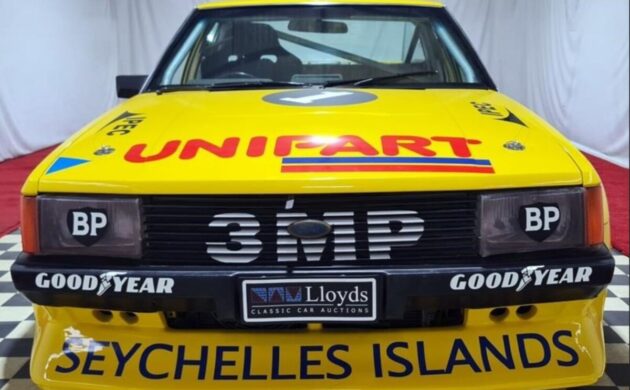

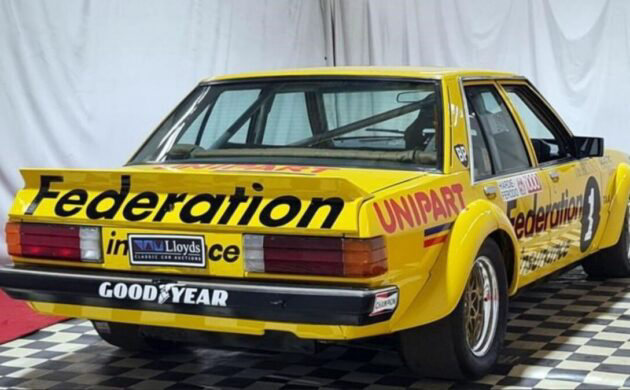
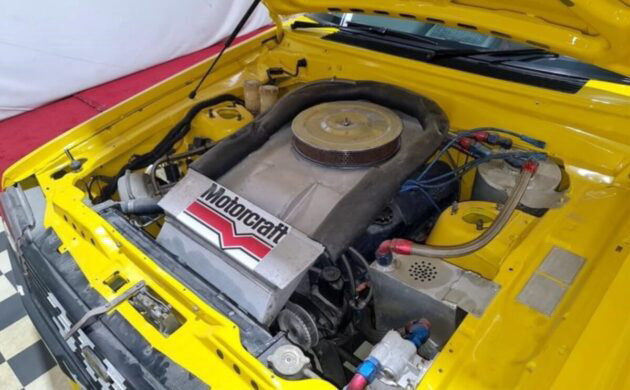
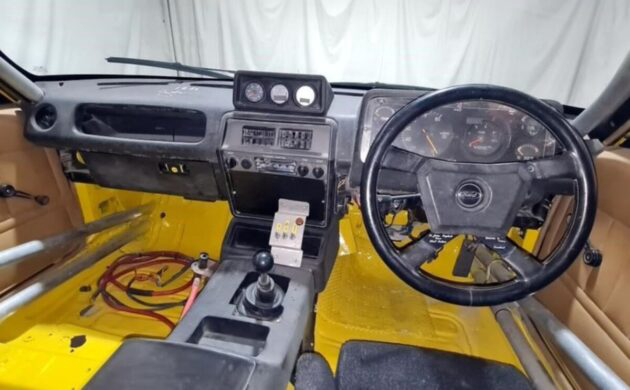
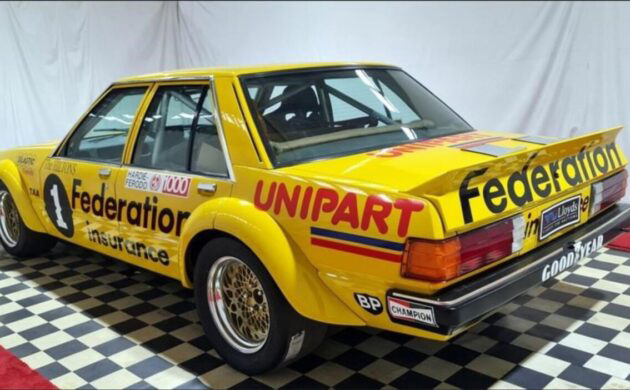


Fantastic!!
As I was born and raised close to Bathurst I was fortunate to attend many race meetings at Mt Panorama in the 60’s – 80’s and meet him. I remember this car quit well mainly due to its poor performance. Still talks with a strong Canadian accent and attends a few functions. This car will not get to the astronomical values of a Peter Brock Torana in seven figures but should get into the six figure region.
These were primarily taxis and family cars with the 250 six cylinder.
Probably 10% with 302 or 351, police cars. Handful of Fairlanes, LTDs
90% of these were taxis or family cars with the 250 six cylinder.
Probably 10% 302 or 351s. Police cars.
Handful of Fairlanes or LTDs.
Hardly ever see them now, 40 years later
” … mainly due to its poor performance … ” !
Awesome looking car. Although I’m not from Australia, I’ve heard of race car driver Allan Moffatt.
Great, informed write up. Alan was a good guy. Because of his Canadian accent he was cast somewhat as an interloper in the local scene, among the local Aussie heroes. As teenagers, myself and cousins helped him push start his Mustang in the pits once. He was going through a bad patch and I remember him saying something like “I’ll have to get lucky eventually”. Approachable and polite. Nice fellow
Adam C. ..
your the MAN !
I don’t know if your getting paid for this but you deserve the employee of the month and a fat Christmas bonus .
The wealth of information, history lesson, education ..
Yes, most all of Barn Finds write ups are excellent, hense I and I can surely speak for most of us, all love Barn Finds !,
but Adam, seriously, THANK YOU .
While I’m here, THANK YOU to all the writers and staff of Barn Finds 👍🍻
you make my inbox merry and bright all year long ..
A very Merry Christmas to y’all 🎶🎄✨
.. oh, and a P.S.
as for this Falcon
Does anyone know what type of Group 5 (Pantera) it was that looked alot like this car but was, of course, a coupe; and the model I drove, a convertible.
It possibly had the same tail lights..
it was rad, and haven’t seen or found another.
.. ok, correction : De Tomaso not Group 5 .
Also, i found the car i was asking about,
its called a ‘ Long Champ’
If you look at these two side by side, gotta wonder who made who or first.
Pass , I am about to be accused of a carinal sin here . But I have never been a fan of auto racing, and would not buy one or take another if it was given to me. I was given an old racer in my twenties and let it go to the nearest junk yard.
Great story, but not quite factual.
My XD was plated 1978.